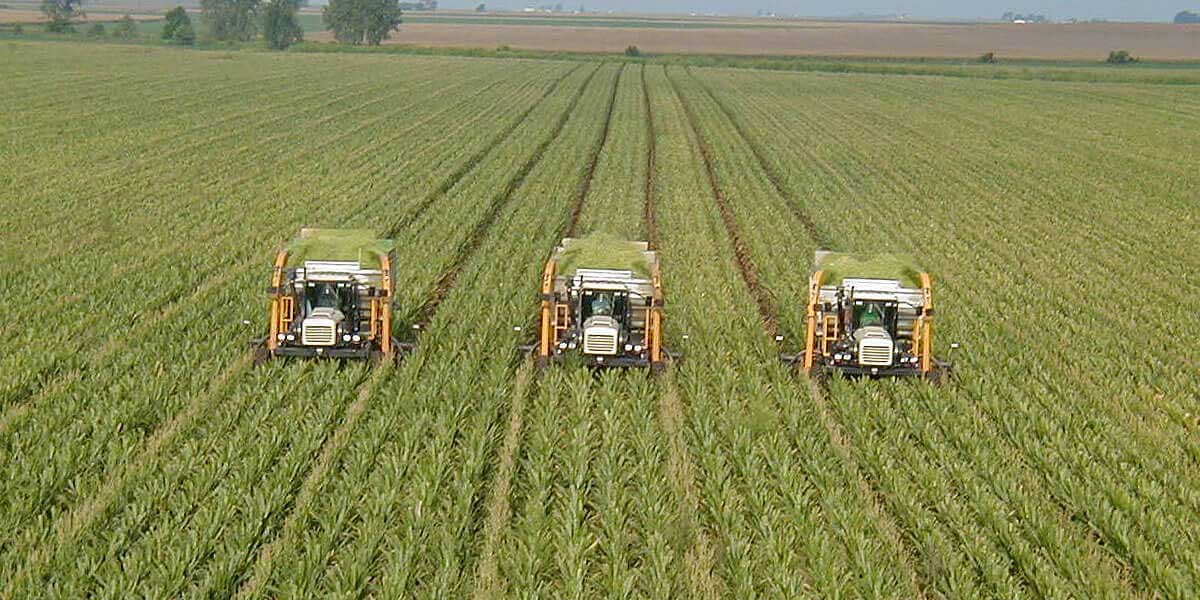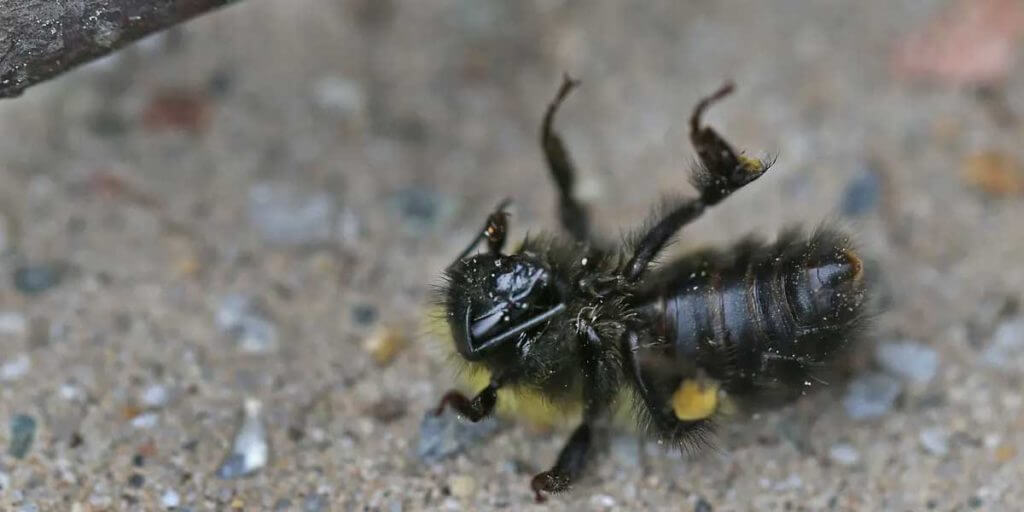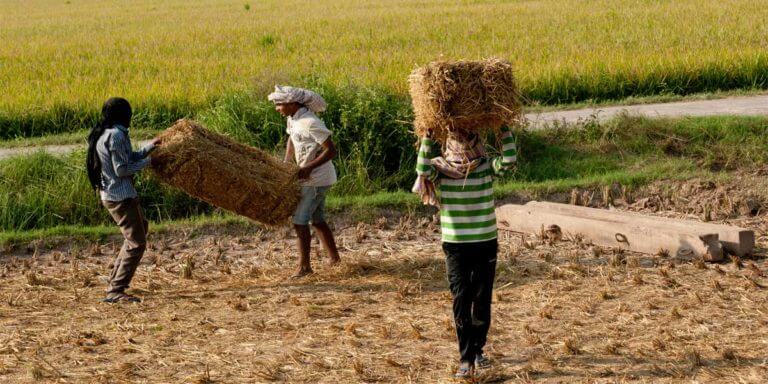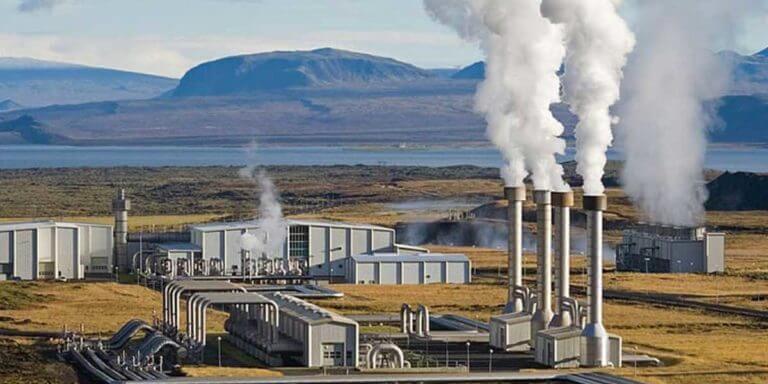Pros And Cons Of Monoculture | What Is Monoculture, What Are Its Benefits?

Farming is one of our oldest professions. The success rate of being able to cultivate nutritious food has always impacted our quality of life. We all probably carry the genes of our forefathers from the Stone Age who have started to settle and cultivate the first crops instead of foraging for seasonal foods only.
In addition to the evolution of our method of living throughout the centuries, our food production systems have constantly been progressing also, approximately the point when small subsistence agriculture wasn’t enough to feed everybody in the increasingly developed world.
That is when in the 2nd half of the last century, massive, extensive farming techniques appeared. And they seemed to be the leading solution to making the most of agricultural production from cultivated lands by limiting the concentrate on high-yielding ranges or types that prospered the most in regional conditions.
By becoming specialized in producing only the most affordable choices, running expenses of farms decreased, and farm management ended up being easier as farmers might follow the same strategies every growing season.
Furthermore, this approach allowed farmers to invest in technological innovation that enabled them to use their time and resources with the greatest performance.
Not surprising that by doing this of farming has quickly gotten appeal among farmers and has caused the development of rural landscapes in many locations worldwide as we understand them today– large locations of evenly looking crops, planted at the same time, collected at the very same time, year after year.
These are the applauded monoculture fields, looking neat and thriving at the first look, yet hiding some unfavorable elements right listed below their beautiful surface area.
What Is Monoculture Farming?
Monoculture farming suggests that on a provided agricultural land is grown only one types of a crop at a time. If two or more species are planted in the field together (for example beans and corn), it is not a monoculture but a polyculture system.
It is very important to understand that we still call it monoculture even if this single crop species is changed by a different crop in the next growing season.
We see this practice being applied on large industrial farms frequently when farmers, for example, grow corn on a field for 2 years in a row and the 3rd year plant soybean to rotate the crops.
The reason that is still monoculture farming is that there is only one species of genetically uniform plants present on the field at one time.
Another approach of growing monoculture crops is maybe the one that you would imagine at first when hearing the term. It is a constant growth of the same crop species on the same land every year without change. This approach is also described as “monocropping” or continuous monoculture.
However, monoculture isn’t connected just with crop growing; it is used even in animal farming. Examples of monoculture animal farms are everywhere around us: farms concentrating on raising high milk production dairy cows, broiler chicken farms, sheep farms, pig farms … and other.
Unfortunately, monoculture in animal farming typically equates to factory farming, which is done at the great expenditure of animal well-being in exchange for high performance.
What Are The Advantages Of Monoculture Farming?

At this moment you might not know what to consider monocultures. Is this farming method good for our future food production system, or is it simply another more ‘convenient-at-the-moment’ method of producing food for masses?
Let’s have a look at the advantages of single plant cropping and single animal types raising, and you will comprehend why this method is appealing to numerous farmers.
1. Allows Specialized Production
Any economic expert will inform you that specialization is an advantage as it creates economies of scale that make the most of earnings and minimize expenses. The same concept applies to agriculture, particularly on a large-scale, industrial level.
Do not forget that running a farm equals to running a service, which involves a lot of duties, understanding, long-term planning and investment. It requires a set of interdisciplinary skills combined with taking threats without having the ability to predict the outcome.
By cultivating the same types, farmers can optimize their operations given that growing requirements, planting, upkeep (including pest control) and harvesting will be the same throughout the farmed land. This allows for planning, taking some time off and being gotten ready for each growing season when it’s required.
Specialization likewise enables farmers to establish extensive knowledge and direct experience about their particular crops or animals. This is a terrific advantage in preventing substantial losses before they occur, as farmers might acknowledge warning signs of disease right at the start or understand how to mitigate damage caused by unforeseen weather.
A smaller range of fruit and vegetables reflects an increase in production at a lower cost because the devices and farm management stay the same over the time. Additionally, buying seeds and supplements wholesale typically suggests getting some portion off the introductory price, which even more pushes the costs down.
2. Promotes Technological Advances In Agriculture
Yes, it was monoculture that initially permitted the deployment of the mechanization in agriculture and changed the way of life of individuals in numerous industrialized countries for good.
At the beginning of the 20th century, the mechanization changed the strenuous human labor in farming and began the shift towards industrialization– increasing efficiency, allowing more people to handle various occupations rather than simply farm for subsistence, bringing costs of food down, generating urbanization.
So, how did this shift begin?
By planting the very same crop on one field, farmers developed as uniform conditions as possible throughout any growth phase. Picture: the same distance between rows and individual plants, the same size of plants in the same vegetative stage throughout the field.
These were the perfect conditions for bringing in machinery to take control of the tasks like planting and collecting that would otherwise need continuous manual labor of lots of people.
Because of the time when the very first tractors plowed the fields, the innovation used in agriculture has advanced a lot more. Nowadays, you can see the most specific equipment that perfectly matches the requirements of farmers concentrated on intensive production of certain crops.
Take, for example, the spindle-type cotton harvester. A customized machine that gathers more than 90 percent of cotton lint effectively from a field and can wrapping collected cotton into bales at the spot.
As you can envision, this greatly minimizes other labor that would be involved if farmers didn’t own such technology.
When it pertains to advances in farming, we should not forget even animal farms, where the technology advanced in a way that dairy cows are milked by robotic milking devices that also feed them their private feed part based on the computer system reading from each cow’s chip. Or manure cleansing robotics that promptly removes manure from big stables.
3. Boosts Performance
The main reason farmers choose for monoculture agriculture is their desire to optimize output and minimize labor that is included.
It is as easy as it sounds, and it considerably enhances the performance of jobs and processes that happen during the production.
Monoculture can play to the benefits of the local climate and soil conditions. Crops that are best suited for the land are planted so that soil and environment requirements, such as winds, droughts or a short growing season, don’t affect the yield as much.
For example, constant monocultures of wheat are cultivated on fields throughout Texas and Oklahoma. Farmers stay with this commodity crop out of useful factors. These areas get too little yearly rainfall to support other product crops without watering.
4. Maximizes Yields Of Some Produce
According to Andrew McGuire from the Washington State University, yearly cereal crops merely have higher productivity. They are simpler to handle when planted as monocultures rather than combined with some other crops on one plot.
Nevertheless, there is one very important condition that affects this higher yield. These crops require to be handled under the crop rotation scheme of rotating a minimum of 2 various monocultures on one field. The reason is basic and practical. Crop rotation enables soil healing and disrupts insect cycles.
Examples of rotation schemes can appear like this:
- wheat turned with canola, followed by two years of being fallow
- wheat, canola, barley and fallow period
- two years of corn and one year of soybean
- Rotation schemes can differ considerably, and it depends on each farmer to select the most convenient one for the regional conditions.
When crops are not rotated, many studies accompanied by the years of the first-hand experience have verified that continuous monocropping causes declining yields.
This takes place because soil nutrients get depleted to the point when the production of the chosen crop from that piece of land is not sufficient, and plants are of poor health.
Besides, costs are increasing because more fertilizer needs to be applied, and the application of pesticides increases too. For this reason, the majority of farms follow some standard rotation schemes.
This means that if farmers turn monocultures on the very same land in a practical manner in which appreciates the soil ecology, they can achieve high yields from particular monocrops in the long-lasting.
5. Is Simpler To Manage
What is likewise appealing to farmers is the apparent simpleness and uniformity of monoculture.
It is much easier and straightforward to cultivate one kind of a crop or reproduce one type of an animal in terms of the knowledge and experience required to do it effectively.
This offers farmers more space to enhance their system based upon the experience, as they have time to observe what system works the best for the local climate and soil type.
Because farmers focus their management only on particular crops or livestock, they can afford to buy specialized machinery that will help them produce the profits and will make their work much easier.
6. Deals Greater Profits
60 percent of cotton production is carried out in the type of continuous monoculture in the United States. Years after years, acres of land are covered just in cotton.
Why? Because cotton is paid more than any other crop and turning it with various low-profit crops would refuse essential income source.
In areas where cotton succeeds, it is the most favored monocrop by a lot of farmers. Besides paying well, its advantage is a deep root system that permits extremely effective usage of nutrients from soils.
This indicates that the dietary needs of cotton are lower than of other crops. If farmers rotated cotton with other product crops like corn, they would have to add more fertilizer to supply sufficient nutrient levels for corn plants. That is why maintaining continuous cotton monoculture is more successful for them in the end.
Other reason farmers produce more income from monocultures is conserving on the devices.
For example, wheat needs various planters than corn or soybean. For that reason, it makes perfect sense why many farmers specialize in wheat with other cereal crops, or they follow the rotation scheme of corn and soybean monocultures that utilize the same equipment. It’s merely the most economical choice.
Because the success of farming is figured out by the regional climate and soil conditions, farmers likewise choose crops that have the greatest prospective to flourish in their region, are well paid, and more than likely will have the greatest yields.
Range of appropriate crops that fall within these requirements might be limited, which is another reason farmers prefer the simpleness of monocultures.
What Are The Drawbacks Of Monoculture Farming?

With the increasing evidence of contamination caused by modern agriculture, reducing soil fertility and spread of pests, monoculture farming gets a lot of bum rap.
Single crop farming is blamed for destroying natural defenses of lands, hence adversely affecting the durability of ecosystems. In addition, as lots of studies verify, monoculture itself doesn’t constantly guarantee the best harvest.
How serious are these unfavorable effects of monoculture on the environment and food security, and should they be exclusively attributed to this way of farming?
Let’s take a look in information at the numerous cons of this agricultural practice.
1. Increase In Insect Infestation
When insects discover a place where their source of food is abundant and built up in one location, they succeed. There is absolutely nothing standing in their method from ending up being stronger and growing in numbers.
Bingo! We have just made their life simpler by producing their preferred conditions in one place and at the same time by growing large swaths of monoculture fields where plants are of the same age, of the very same types and in a lot of cases even genetically identical.
In the case of continuously grown crops, we have even made sure that numerous bug generations can gladly increase over the years and start brand-new discoveries to adjacent croplands.
Weeds and insect pests can spread out faster in monocultures since of the absence of biological and hereditary variety.
In monocultures are no natural defenses, no barriers of naturally-repelling plants that would stop pest infestations. They have favorable conditions across big pieces of land, and when one plant is prone to a pest, all other plants of the very same species are likely to struggle with it.
This is something that has been understood and shown by various research studies for several years. For instance, a study from 1983 specifies that in cotton monoculture populations of 13 different pest types increased.
It has clear implications for farmers who count on the single crop for their earnings– if something goes bad, the whole yield is probably going to be impacted.
This took place for example in California in the 1980s when over 12,000 acres of vines needed to be replanted after it was found that their roots were severely impacted by a new kind of a Phylloxera bug (biotype B).
Another dramatic case took place in Ireland in between 1845 and 1852 when 75 percent of the nation’s food staple crop– potato– got contaminated by potato blight (a fungus-like bug Phytophthora infestans) that ruined the majority of the harvest.
The impacts of such a big bug problem were tragic. Almost one million individuals passed away from starvation, and numerous others were forced to leave their houses in desperate efforts to protect their families from this seven-years long starvation.
Also Read: How To Heat A Greenhouse With Solar Panels
2. Develops Pesticide Resistance
When insects plague crops, farmers use pesticides to kill these unwanted organisms. But some insects constantly manage to endure.
It is those survivors who slowly establish a resistance to used pesticides and then pass it on their children. New generations of insects are born with pesticide resistance. They are ready to face brand-new difficulties of additional enhancing their survival strategies and smartly progressing according to our land management decisions.
This causes a growing number of pests making it through every brand-new pesticide application. Farmer’s response most of the times is to increase the frequency and amount of the pesticide application on the field.
It might work … briefly, however, in the long-term, this method is inefficient, unsustainable and damaging to natural systems where these chemicals build up.
According to the International Study of Herbicide Resistant Weeds, 256 types of weeds have been reported to have developed resistance to 167 different herbicide solutions.
Among them is Palmer Amaranth or Palmer’s pigweed, a stubborn weed that infests cotton and soybean crops in the United States. Based on the farmers’ observation, this weed has already established resistance to 13 various herbicides by now.
Are we simply experiencing the creation of a superweed that requires more powerful pesticides? Or has the time come to alter our farming systems?
3. Degrades Soils
Intensive farming damages soils more than any other activity we do.
According to the United Nation’s backed study from 2017, one-third of the planet’s soils are broken down due to inconsiderate methods used in the modern farming And sadly, monocultures top the list of causes to be blamed for the global destruction of soils.
Each plant within an environment requires a particular amount of nutrients to grow. In natural environments, plants have developed to take the opportunity of readily available nutrients in their environment. If one plant species chooses a specific composition of nutrients, another plant specializes in making the most out of the staying nutrients.
This is why healthy ecosystems are such a fantastic diversity of types. What one does not take, another one cherishes. Varied plants coexist together in balanced numbers. They produce stability in between nutrient consumption and nutrient replenishment. When alive they use nutrients for their growth, once they pass away and decay, their share of nutrients is returned into the soil.
However, when we continuously plant only one crop with its particular dietary requirement on the same piece of land, and we take it away when it has reached maturity, this cycle is cut off. It’s just a matter of time up until the plant’s favored nutrients get depleted.
This might not be such a problem because farmers can quickly apply artificial fertilizers in the next growing season, but it’s not as easy as it appears.
Monocultures radically push the soil environment out of balance by producing much more unfavorable impacts. Let’s start with the tiniest and easily neglected unit– soil fauna.
Soil organisms, like mites, earthworms, spiders, are crucial for healthy soil structure and structure. Their abundancy depends on the diversity of food sources and soil physical attributes– which are consistently poor in monocultures, therefore unsuitable for these crucial helpers.
Their numbers are plunging on such lands, and important functions they carry out are doing not have. Regretfully, this consists of vital services such as breaking down raw material, dispersing nutrients, and elimination of parasites or harmful bacteria and fungi.
Another frequently seen issue is erosion. Fields used for monoculture farming are frequently left for many weeks discovered with no vegetation safeguarding soils from early spring snow thaw. Or they have too big spacing between rows exactly when those strong summer thunderstorms struck in.
The absence of natural vegetation cover mainly contributes to soil disintegration by water and wind, permitting fertile topsoil to be quickly gotten rid of and deposited elsewhere. (Most of the times in lakes or rivers where it causes more damage than advantages.).
Furthermore, as helpful as heavy machinery is its heavyweight compacts soils, altering their structure and making it harder for rain and nutrients to enter below the surface area.
This is where the vicious circle closes since no matter how much water and fertilizers are used; these soils are not able to take them in and utilize them for crop development. The result is increased runoff of concentrated nutrients that pollute surrounding areas, while cultivated lands yield less and less.
4. Encourages High Use Of Fertilizers
For the previously discussed reasons, farmers concentrated on high-yielding monoculture crops need to apply fertilizers to get the maximum efficiency from their crops.
Diversity doing not have monocrops simply can not improve soils of a variety of nutrients on their own as natural environments would. On the contrary, each crop tires nutrients it needs for its development. That is why farmers have to provide these nutrients every year ‘synthetically.’.
Longer the same monoculture grows on the same land; more fertilizers are needed because soils get more worn out and harm.
According to a report from the Food and Farming Organization (FAO), the international demand and use of fertilizers have increased from approximately 162 million lots to 200 million tons in the last years (in between 2008 and 2018). And naturally, future projections show more increase in the requirement of feeding soils with these focused compounds.
To get a much better concept, let’s take a look at intensively grown corn crops in the United States. Covering over an area equal to the size of California, 5,6 million tons of synthetic fertilizer is applied each year over these crops.
These numbers are severe and should stress us. When there is a need to provide a lot of artificially produced nutrients to the environment, does not that imply that something we are doing is not right?
And because nature functions in cycles, where do all these excess nutrients end? The answer is as you might have feared … in our air and water, on our plates, and our bodies.
5. Decreases Biodiversity
Monocultures are based on getting rid of biodiversity of plants or animals on a piece of land. That’s the key concept. That’s what makes monocultures appealing.
Their simplicity and non-complicated nature considerably suit the industrialized food production system. Biodiversity is undesirable in monocultures.
The bad news is that healthy life– energetic, strong, resistant– has its roots in diversity. In diversity of conditions, food sources, enemies, pals. Life has evolved around these principles that often offer a bounty of chances, sometimes present big obstacles.
So, what is the primary disadvantage of lowering biodiversity across farming lands?
When other plants and animals are gotten rid of, and we narrow down biodiversity, we need to artificially replacement for functions and services biodiverse environments would carry out naturally.
It is because we almost completely remove biological controls of the system by removing likewise helpful pests and plants that would serve as a defense against bugs and illness.
Due to the loss of this natural resistance, farmers must closely keep an eye on and regularly apply synthetically-created compounds to their monocultures. For this reason, increased input of fertilizers, pesticides, antibiotics, hormones, water and myriad of other ‘growth enhancers’ to monocultures.
To comprehend the effect of our choices in agriculture, we require to look at the issue even from the opposite. What occurs with those organisms we eliminate from cultivated locations?
According to a study of the German Nature and Biodiversity Union from 2017, 15 percent of the overall bird population has vanished from rural areas in just 12 years. This consists of charming birds like sparrows, finches and skylarks. Bugs are doing even worse. Insect populations have decreased by 76 percent over the previous 27 years.
Both problems are linked to each other because many birds consume pests, and to extensive farming with the overuse of insecticides and damage of natural environments that offer shelter and food variety for birds and insects.
6. Eliminates bees and other pollinators
Honeybees and other sensitive pollinating bugs are decreasing in numbers like other pests due to the use of pesticides in farming. This is the primary issue, but did you know that monoculture farming has likewise another unfavorable impact on bees?
In biodiversity deprived locations, bees have a hard time to get enough helpful germs with their food supply. This implies that young bees are typically raised on a bad diet, doing not have friendly germs like Bifidobacterium or lactobacilli, which assists them in establishing a strong body immune system.
What’s more, without the varied spectrum of germs, a grocery store in a hive spoils faster than it should, leading to food lacks within a hive. This additional damages bees and makes them a lot more susceptible to illness and the effects of pesticides.






